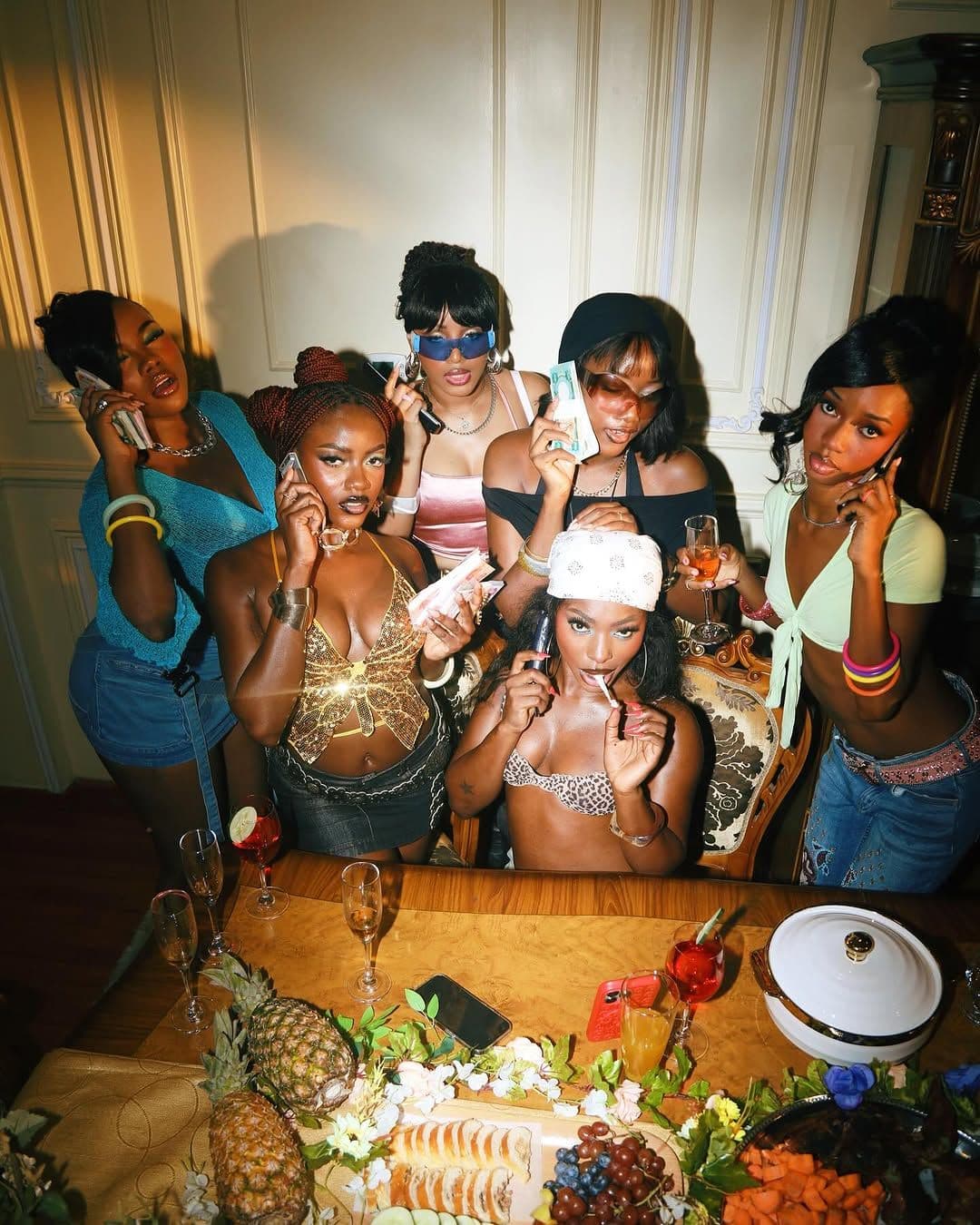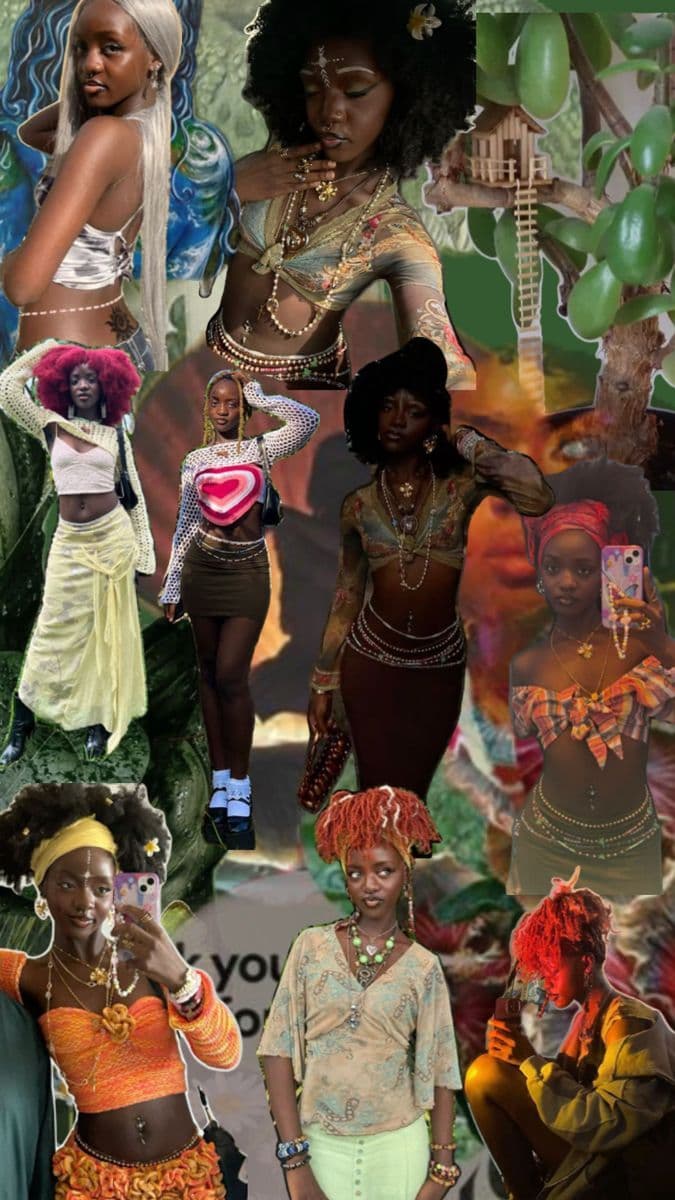Eco Trends & Innovations
4 mins read
How Y2K Is Making Sustainable Fashion Cool Again
By Joy Oshiokenoya
June 3, 2025
The Y2K fashion comeback isn’t just about nostalgia, it’s fueling a sustainable style movement. From thrifted low-rise jeans to DIY upcycled pieces, this revival encourages conscious shopping, challenges fast fashion’s throwaway culture, and highlights durable, quality clothing. Discover how Y2K’s bold, playful aesthetic is making sustainable fashion cool and accessible for a new generation.

Models wearing Y2K-inspired outfits from Darkoo's 'Focus on Me' music video, featuring low-rise jeans, baby tees, and tinted sunglasses. Image source: @darkoo on Instagram
In January 2025, Darkoo, a popular Afro musician, sampled P-Square’s 2009 hit track “Gimme Dat”. The song “Focus on Me (All the Sexy Girls in the Club)” instantly blew up on social media. Before its release, Gen Z fans across platforms like TikTok and Instagram hoped the music video would be reminiscent of the early 2000s.
And boy, did Darkoo deliver! It was a Y2K fashion fest. The fashion girlie in me couldn’t stop giggling and curling my toes. It was perfection in one video. In a short TikTok clip from the music video, you can see girls rocking all sorts of Y2K-inspired outfits, from low-rise jeans to baby tees and tinted shades.
The artistic direction of the video had people talking, and it’s not just about its nostalgic sensibilities, but also how Y2K fashion is promoting sustainability while in the spotlight, in fresh and unexpected ways.
As a girl who grew up yelling P-Square lyrics I had no business singing at that age, and gooning over the outfits on those video vixens, it's such a pure joy to see the early 2000s making a comeback. From the music to the fashion, there’s something special about watching a new generation fall in love with an era that shaped our childhoods.
If you live on TikTok like I do, you know this moment wasn’t random. Influencers like @omolotsss, who’ve been championing thrifting and vintage style for years, helped bring this whole vibe to the forefront. Y2K didn’t just come back, it was brought back with intention, creativity, attitude, and a whole lot of secondhand finds.

A collage of @omolotsss serving Y2K looks effortlessly. Image source: Pinterest
But what exactly is Y2K fashion? And why is everyone suddenly into it again?
What is Y2K Fashion?
Before we get into why this nostalgic trend is suddenly everywhere, let's break down what Y2K fashion really is and why it’s become a go-to for conscious fashion lovers.
Y2K fashion draws inspiration from the late 1990s and early 2000s. Think iconic pieces like bootcut jeans, crop tops, mini skirts, bold accessories, chunky sneakers, and cargo pants. It’s the perfect mix of retro aesthetics and eccentric-chic.
This bold, expressive aesthetic is now being reimagined through a sustainable fashion lens. It’s proof that fashion is circular and what goes around always comes back around.
How Y2K Fashion is Promoting Sustainability
The Y2K resurgence is more than just a style revival. It’s shaping how we shop, wear and re-wear fashion.
Here’s how;
1. Encouraging Thrifting
The Y2K aesthetic is all about unique, standout pieces. And thanks to the demand for authentic Y2K pieces, second-hand fashion is thriving. Thrift stores and local markets have become the go-to for these finds.
By promoting second-hand shopping, the movement is reducing the demand for fast fashion and helping keep clothes out of landfills.
2. Reviving DIY and Upcycling Culture
Y2K fashion is breathing new life into DIY and upcycling. People are revamping old clothes to fit this vibe. There are lots of videos popping online of people cropping their old tops, tailoring jeans, or adding bold embellishments.
Instead of discarding pieces that feel “outdated”, people are transforming them and extending their lifespan.
3. Challenging the Idea of Outdated Fashion
One of the most powerful aspects of the Y2K resurgence is how it’s redefining the idea of what’s “in” or “out.” By tapping into nostalgia, it shows that fashion is circular and timeless. Nothing is ever truly outdated; it’s just waiting for its comeback moment
4. Highlighting Quality Over Quantity
Many Y2K pieces, like denim and chunky sneakers, were designed to last. This shift back to durable, long-lasting fashion is a quiet rebellion against the fast fashion mindset of disposable clothing.
Moving Beyond the Trend
Y2K fashion reminds us that fashion isn’t about discarding the old, but rediscovering it. It has shown us that sustainability in fashion doesn’t have to be boring or overly serious. It’s vibrant, playful, and deeply nostalgic.
However, for it to have a lasting impact, it must be embraced as a movement rather than just a passing trend.
So, got a thrifted Y2K gem sitting pretty in your closet? Or a fav Y2K fashion creator you swear by? Tag them. Post them. Share them. Let’s keep the movement going.
Use #Y2KMadeMeDoIt or #ThriftedThatThread to join the convo.
Like Post
Comments
Promise
6/9/2025“By promoting second-hand shopping, the movement is reducing the demand for fast fashion and helping keep clothes out of landfills” THIS IS MY BEST PART ❤️ #Y2KMADEMEDOIT
vance
6/5/2025Nice read.
Related Posts
MoreRita Idehai, on Waste, Work, and Driving Social Impact in Nigeria
Through Ecobarter and its fashion arm, Wrep, Rita Idehai is transforming plastic waste into fabric, and creating new pathways for women and communities to thrive.
Miss Green Fashion ‘25: Celebrating Beauty, Sustainability, and Impact
Miss Green Fashion is redefining beauty with purpose, promoting sustainability, creativity, and women’s empowerment.
10 Sustainable Fashion Habits You Can Start Today
We highlight 10 simple everyday habits to make your fashion choices more sustainable, from rewearing and repairing to thrifting and supporting local artisans.
The Hidden Plastics in Our Clothes
Much of our clothing is made from plastic-based fabrics like polyester and nylon. Learn their impact and how to choose more sustainable options.